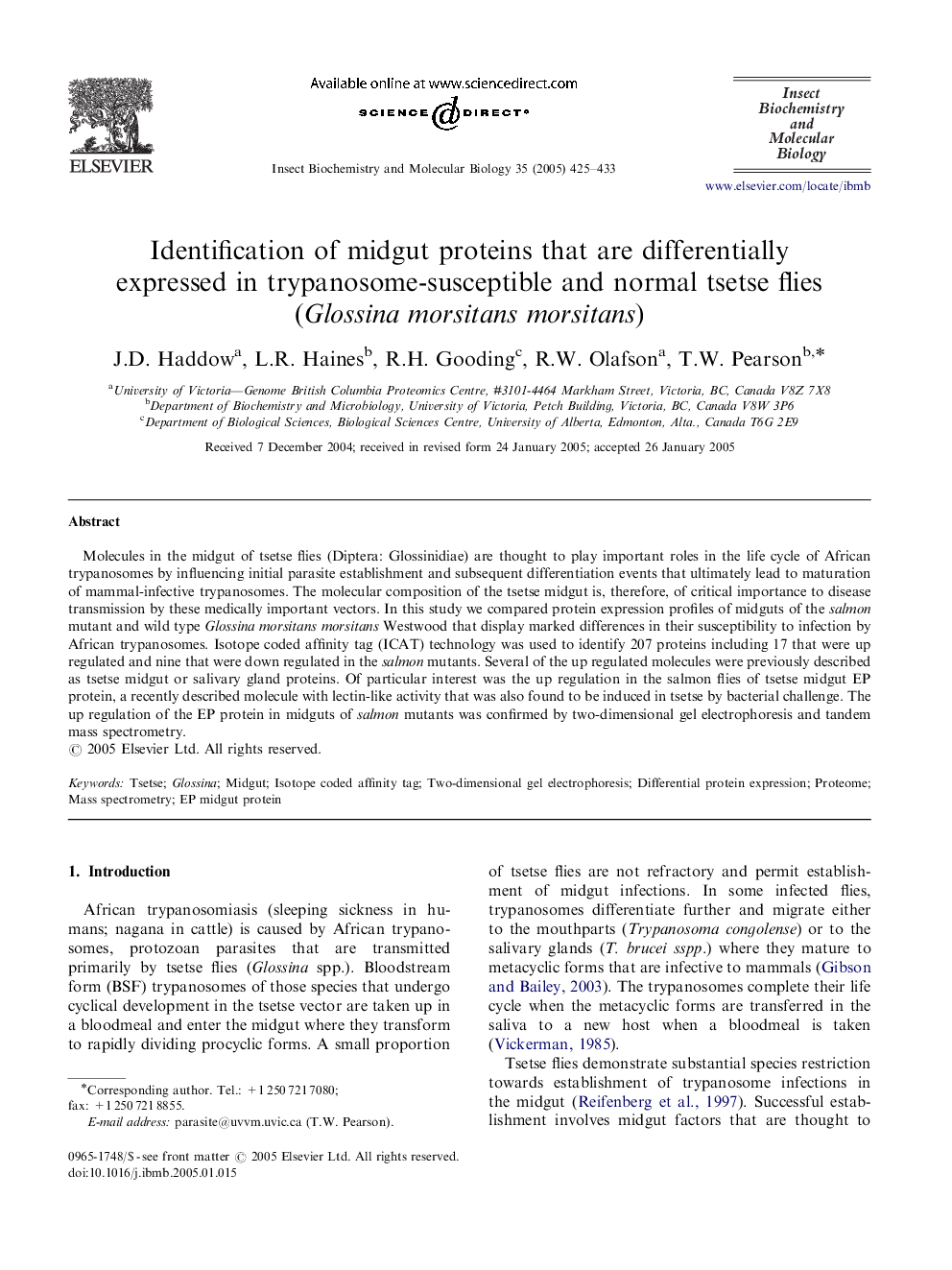| Article ID | Journal | Published Year | Pages | File Type |
|---|---|---|---|---|
| 10824414 | Insect Biochemistry and Molecular Biology | 2005 | 9 Pages |
Abstract
Molecules in the midgut of tsetse flies (Diptera: Glossinidiae) are thought to play important roles in the life cycle of African trypanosomes by influencing initial parasite establishment and subsequent differentiation events that ultimately lead to maturation of mammal-infective trypanosomes. The molecular composition of the tsetse midgut is, therefore, of critical importance to disease transmission by these medically important vectors. In this study we compared protein expression profiles of midguts of the salmon mutant and wild type Glossina morsitans morsitans Westwood that display marked differences in their susceptibility to infection by African trypanosomes. Isotope coded affinity tag (ICAT) technology was used to identify 207 proteins including 17 that were up regulated and nine that were down regulated in the salmon mutants. Several of the up regulated molecules were previously described as tsetse midgut or salivary gland proteins. Of particular interest was the up regulation in the salmon flies of tsetse midgut EP protein, a recently described molecule with lectin-like activity that was also found to be induced in tsetse by bacterial challenge. The up regulation of the EP protein in midguts of salmon mutants was confirmed by two-dimensional gel electrophoresis and tandem mass spectrometry.
Keywords
Related Topics
Life Sciences
Agricultural and Biological Sciences
Insect Science
Authors
J.D. Haddow, L.R. Haines, R.H. Gooding, R.W. Olafson, T.W. Pearson,
